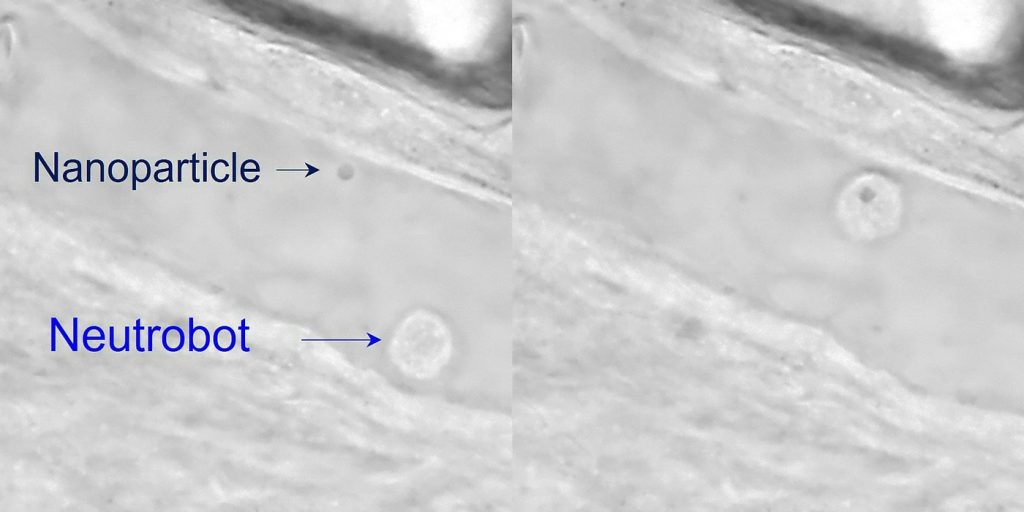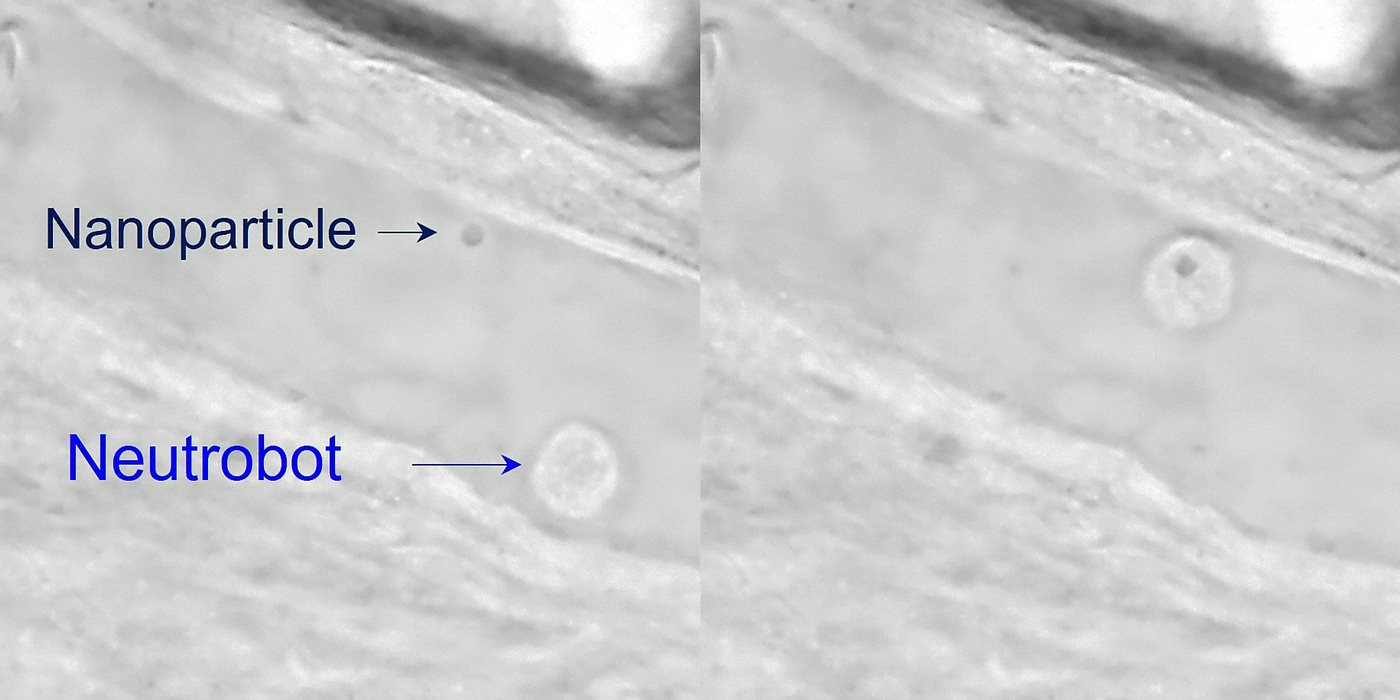
White blood cells have been made into a kind of micro-robot that could treat and prevent life threatening illnesses, according to scientists in China.
The tiny, laser-guided machines are made from white blood cells called neutrophils—and are set, the scientists think, to revolutionize medicine.
Named ‘neutrobots’, they can deliver drugs to precise locations in the body after being directed by laser beams. Other devices developed to perform similar tasks contain synthetic materials which in several instances have triggered serious immune responses and biological rejection.
“The neutrophil microcrafts can be remotely activated by light and then navigated to the target position along a designated route,” said project leader Dr. Xianchuang Zheng, of the Institute of Nanophotonics at Jinan University, China.
In experiments on the tails of zebrafish, the Chinese team used an incredibly impressive and precise laser called a scanning optical tweezers (SOTs) to perform three potential applications with the neutrobots.
SOTs point a highly focused beam to hold and move microscopic and sub-microscopic particles in a manner similar to tweezers, and were used with the help of the neutrobots for cell therapy, targeted nanomedicine, and removal of debris or organic waste that can trigger disease.
SIMILAR: Protein ‘Motors’ Can Swim Around Wounds to Kill Bacteria –And Deliver Lifesaving Drugs
Additionally, the neutrobots could carry payloads directly to a tumor, blood clot, or infection.
“By integrating the non-invasive manipulation of optical tweezers and innate immunologic function of neutrophils, the proposed microcraft provides new insight for the construction of native medical microdevices for precision medicine,” Dr. Zheng said. “The neutrophil microcraft can be activated or recovered in a controlled manner and the migration is fully steerable—just like driving a vehicle.”
The zebrafish have high blood circulation to their tails, allowing the neutrophils to be clearly identified through fluorescence labelling.
Au natural
It’s significantly less scary than other nanobot medical applications being developed elsewhere, like these miniscule crabs theorized as agents to dispose of tumors, clear clogged arteries, or stop internal bleeding.
Ordinary neutrophils are often slow and go in the wrong direction, part of why the development of micro-robotics has steered more towards artificial solutions.
Maneuvers of the neutrobots include remote activation by SOTs at a desired time and location—precisely navigated to achieve a designed route and speed.
Not only do medical microrobots currently in development require injections or the consumption of capsules to get them inside an animal or person, but researchers have found the objects trigger immune reactions in small animals, resulting in their removal before they can perform their jobs.
CHECK OUT: ‘For the First Time’, Researchers Use Healthy Stem Cells for Future Type 1 Diabetes Cure
The study in the journal ACS Central Science is the first time they have been guided with lasers in living animals. The light-driven microrobot could be moved up to a velocity of 1.3 microns a second—three times faster than a neutrophil naturally moves.
In one test, a neutrobot was moved through a blood vessel wall into the surrounding tissue. Another picked up and transported a plastic nanoparticle, showing its potential for carrying medicine. When one was pushed toward red blood cell debris, it engulfed the pieces.
It seems pure science fiction, but could become standard of care.
SHARE This Medical Miracle With Your Friends On Social Media…




















